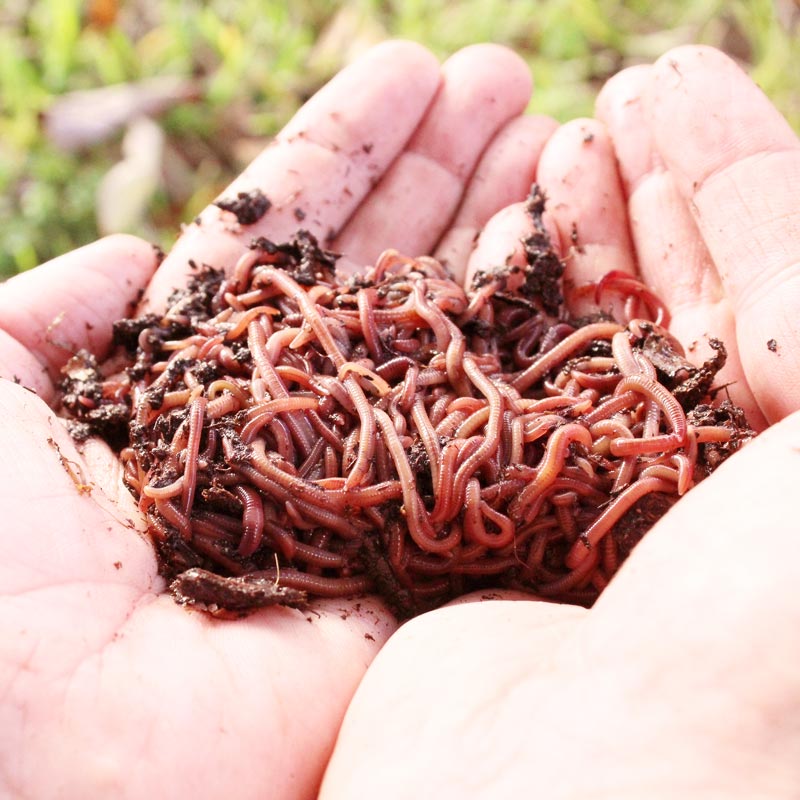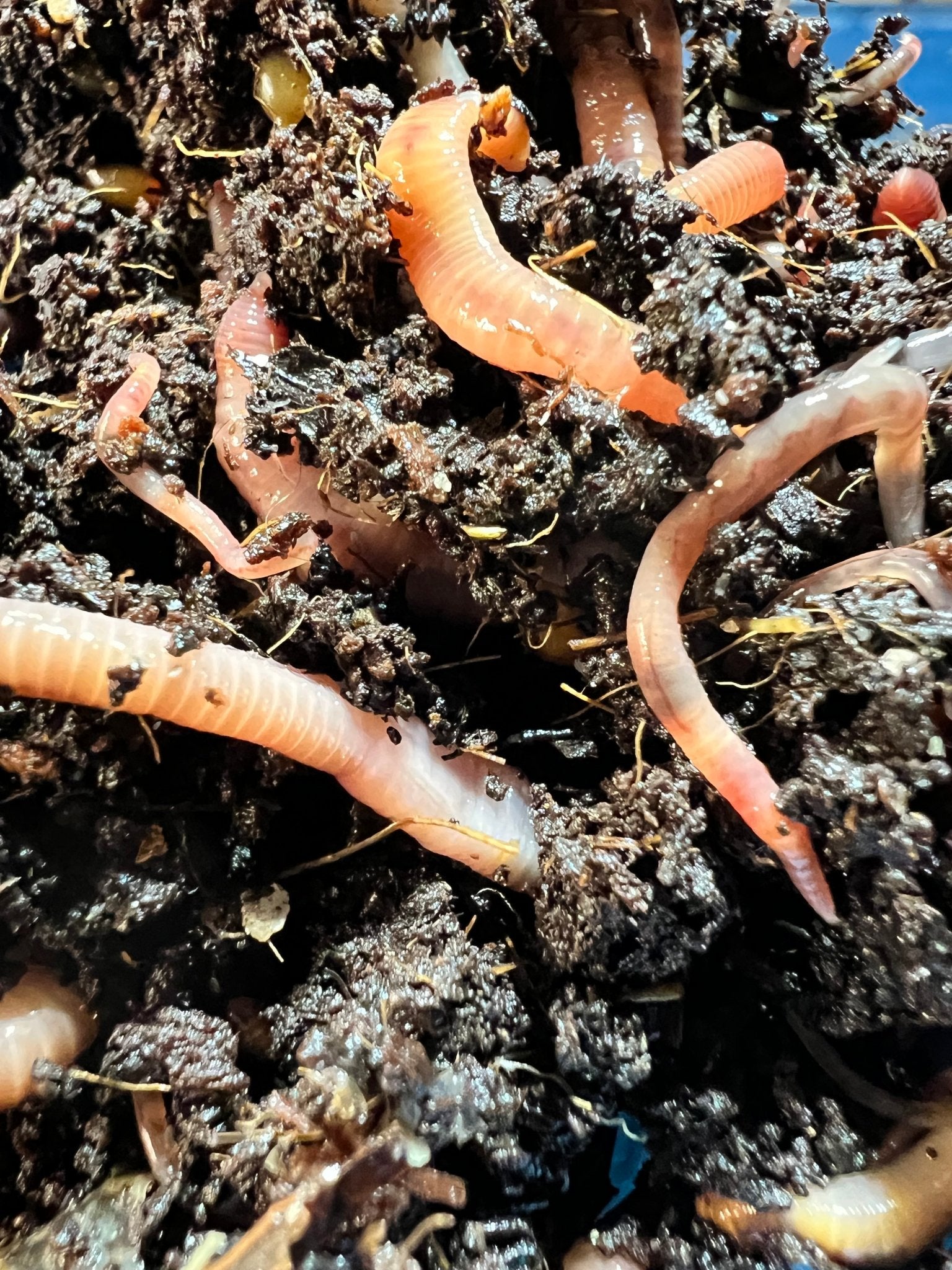Organic Composting with Red Wiggler Worms - Boost Your Yard's Growth
Wiki Article
Maximizing the Perks of Red Wiggler Worms: A Comprehensive Manual for Home Gardeners and Urban Farmers
In the realm of sustainable horticulture practices, red wiggler worms stand as unhonored heroes, quietly changing natural waste right into nutrient-rich spreadings that can function marvels for soil wellness. By discovering the ins and outs of exactly how to effectively care for and make the most of the advantages of red wiggler worms, people can unlock a wide range of possibilities for enhancing the sustainability and efficiency of their gardening ventures.Comprehending Red Wiggler Worms
Red Wiggler worms, renowned for their effective composting abilities, are a varieties of earthworms extensively used in vermiculture techniques. These worms, clinically referred to as Eisenia fetida, prosper in decaying natural product, making them excellent prospects for composting (Red Wiggler Worms). Red Wigglers are ravenous eaters, efficient in consuming their own weight in organic waste daily. Their digestion procedure breaks down organic matter right into nutrient-rich castings, which are an important source for enriching soil and promoting plant development.One trick characteristic of Red Wiggler worms is their reproductive price. These hermaphroditic creatures have both male and women reproductive body organs, permitting them to duplicate rapidly under beneficial conditions. A fully grown Red Wiggler can produce numerous children in a brief duration, ensuring a steady populace within a composting system.

Setting Up a Worm Bin
When developing a worm container for vermiculture purposes, proper preparation and attention to detail are necessary for creating a conducive atmosphere for Red Wiggler worms. Begin by picking an appropriate container for your worm container. This can be a plastic or wooden container with a cover to preserve moisture levels and protect the worms from light. Ensure that the bin has drain holes near the bottom to avoid waterlogging.
Place the worm container in an awesome, dark place away from direct sunlight and severe temperatures. Consistently keep track of the wetness degrees, including water if the bed linen really feels half-cracked or completely dry. Feed the worms a well balanced diet plan of fruit and veggie scraps, preventing citrus fruits, onions, and spicy foods. By complying with these actions, you can establish up a thriving worm bin that will successfully process natural waste right into nutrient-rich vermicompost for your yard.
Feeding and Maintaining Worms
Making sure a well balanced and nourishing diet plan is vital for the health and wellness and efficiency of Red Wiggler worms in a vermiculture system. It is important to stay clear of feeding them citrus fruits, onions, garlic, dairy items, meat, and oily foods look these up as these can be dangerous to the worms or create unpleasant odors in the bin.Proper dampness levels are additionally essential for the health of Red Wiggler worms. By diligently monitoring their diet plan, wetness, and ecological conditions, home gardeners and city farmers can maintain a effective and healthy Red Wiggler worm populace for composting objectives.
Collecting Worm Castings
To efficiently remove nutrient-rich worm castings from the vermicompost, a methodical harvesting process is crucial for taking full advantage of the composting advantages. The first action in harvesting worm castings is to urge the worms to move to one side of the bin.After the castings have actually been collected, it is very important to divide any type of remaining worms from the spreadings to avoid harming them during storage space or application. One reliable method is to develop cone-shaped stacks of castings under brilliant light. Worms will intuitively move away from the light, enabling for easy splitting up and elimination.
Finally, the gathered worm spreadings must be stored in an awesome, dark, and completely dry location to keep their top quality and visit this site effectiveness as a nutrient-rich soil modification. By complying with these steps, home gardeners and city farmers can optimize the advantages of red wiggler worms in their vermicomposting systems.
Making Use Of Worm Castings in Horticulture
The incorporation of nutrient-rich worm spreadings right into yard dirt can significantly improve plant growth and total soil wellness. Worm spreadings, additionally understood as vermicast, are a natural fertilizer created by red wiggler worms as they damage down raw material. These castings are rich in vital nutrients like nitrogen, phosphorus, potassium, and valuable germs that advertise plant growth and boost soil framework.When using worm castings in gardening, it is vital to mix them thoroughly into the soil or use them as a leading clothing around plants. The slow-release nature of worm castings makes sure a consistent supply of nutrients to plants with time, minimizing the danger of nutrient leaching and promoting long-term dirt fertility. Furthermore, worm castings aid improve dirt aeration, water retention, and microbial activity, creating a healthy environment for plant roots to flourish.

Final Thought
In final thought, the use of red wiggler worms in home gardening and city farming can considerably benefit dirt health and plant growth. By understanding exactly how to set up and maintain a worm container, feed the worms appropriately, and collect their nutrient-rich spreadings, garden enthusiasts can make the most of the benefits of these earthworms. Integrating worm spreadings into gardening practices can improve dirt fertility and general plant productivity. Generally, red wiggler worms provide a reliable and sustainable solution for improving garden and ranch yields.In the realm of sustainable horticulture techniques, red wiggler worms stand as unhonored heroes, silently changing organic waste right into nutrient-rich castings that can work marvels for dirt health.When establishing a worm container for vermiculture purposes, appropriate preparation and focus to detail are important for producing a helpful atmosphere for Red Wiggler worms. The very first step in harvesting worm spreadings is to urge the worms to move to one side of the bin. Worm castings, additionally understood as vermicast, are a natural fertilizer generated by red wiggler worms as they damage down organic matter. By recognizing exactly how to establish up and maintain a worm bin, feed the worms correctly, and collect their nutrient-rich castings, gardeners can optimize the advantages of these earthworms.
Report this wiki page